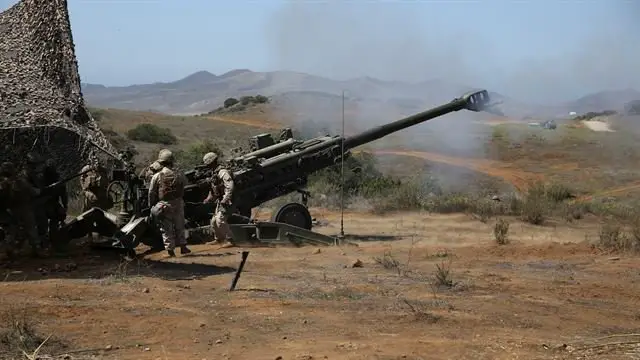First Marine Division conducted Summer Fire Exercise 15 31908153
|
|
|||
|
Armies in the world - US Army
|
|||
|
|
|||
| First Marine Division conducted Summer Fire Exercise 15 | |||
|
The Marine Corps frequently trains Marines to hone unit capabilities and individual skill sets in order maintain its role as the nation’s rapid response force. From Aug. 6-17, Marines with 11th Marine Regiment, 1st Marine Division, conducted Summer Fire Exercise 15 (SUMMER FIREX 15) to sustain core proficiencies and further develop their ability to execute fire missions.
|
|||
|
|
|||
|
|
|||
|
Fire support requires the use of coordinating teams and indirect fires and is a critical combat tactic used in the Marine Corps. During the exercise, Marines focused on their ability to coordinate artillery fires in support of large-scale combat operations and ultimately advance their role as invaluable assets for future missions. |
|||
|
|
|||
|
|
|||
| One of the key elements to any successful operation is the coordination process, oftentimes known as command and control (C2). During the exercise, Marines conducted C2, which requires them to synchronize events from physically different locations. The coordination process is a challenge and that the exercise serves as a way to familiarize Marines with difficult circumstances, according to Whaley. “From the Forward Control Center, we have a wide range of assets we have to coordinate and de-conflict,” said Whaley. “It’s one of the most important steps when conducting fire missions because, if we are off by just a little bit, it can jeopardize a lot of people’s lives. This exercise gives us the chance to see how difficult things can get and see if we can handle it.” Communicating with adjacent units over a wide-spread area proved to be a difficult task, according to Pfc. Chase Lowe, a radio operator with the Battery. “With everything going on around you and still having to relay the right messages is tough,” said Lowe. “If I mess up and tell them something wrong, then the gunline could end up firing at something they’re not supposed to, like friendlies. This is good practice for me so I don’t ever make that mistake.” Marines will continue to train as they fight in order to maintain a high level of mission readiness and build upon group and individual skills. (By Cpl. Demetrius Morgan, 1st Marine Division) |
|||




























